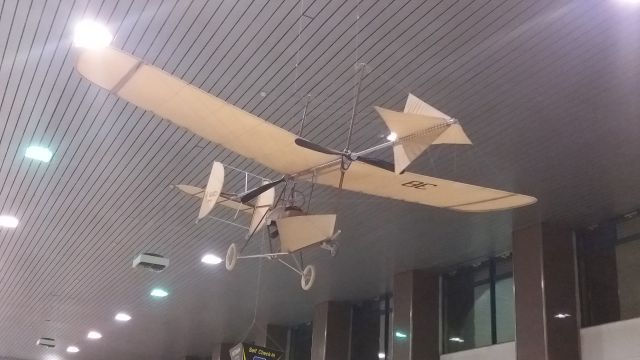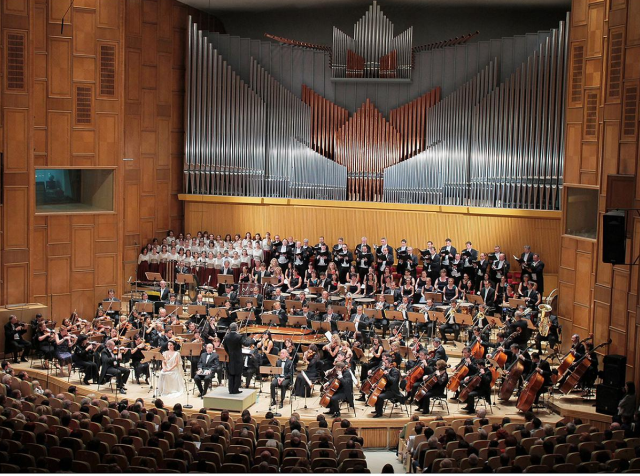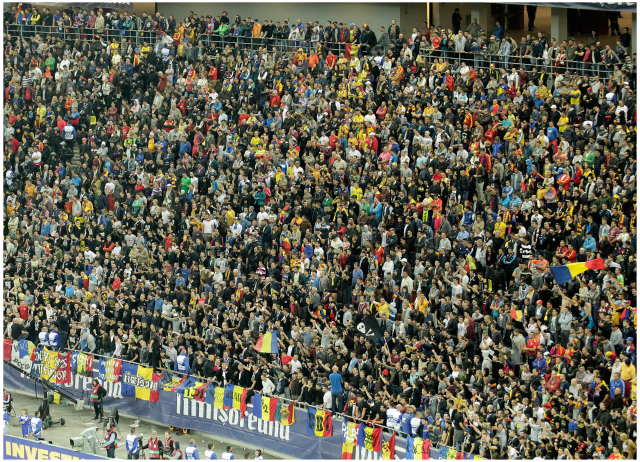The sounds of an airport

Eugen Cojocariu, 17.04.2019, 23:47
“Henri Coanda” — Otopeni International Airport
“Henri Coanda” — Otopeni International Airport, the largest airport in Romania, is located outside Bucharest’s urban area, in the town of Otopeni, and is one of Bucharest’s two airports (the second largest being “Aurel Vlaicu” International Airport in Baneasa district).
During WWII, Otopeni airport was a military base. Until 1965, it was only Baneasa Airport that had operated commercial flights. Later on, a new commercial airport was built on the site of the old military base in Otopeni. The upgraded runway was 3,500m long, being longer than that of Orly Airport in Paris at the time.
The building of a new passenger terminal was included in the upgrading and expansion program. The upgrading continued with the building of a VIP lounge, ahead of the visit to Romania by the U.S. President Richard Nixon, in August 1969. In 1986 a second runway, measuring 3,500 in length, was inaugurated, and a new airfield ground lighting system was implemented. In March 2011, the departure terminal was extended and the number of boarding gates was increased to 24.
In 2018, “Henri Coanda” — Otopeni International Airport registered a record high air traffic movement, of over 13.8 million passengers, and an increase of approximately one million people, as compared to 2017. 57 airlines operate on the airport, taking passengers to and from 128 destinations.
Václav Havel Airport Prague
Each year 17 million passengers pass through it every year and tens of millions of pieces of luggage checked, while over 400 planes land and take off daily.
During its history, which began exactly 90 years ago, Prague’s airport has been through a lot — the rise of the young Czechoslovak state, two occupations, the communist era, the Velvet Revolution…. Today it is a modern structure with first-class infrastructure and is regarded as one of Europe’s safest airports. It provides comfort to passengers at three terminals and can handle even the biggest planes.
Last year it was used by 70 carriers and linked Prague to 157 destinations. In the coming years it is due to get a new terminal and runway.
Beyond check-in: how does luggage make it to the carousel?
Airports are a hive of activity as passengers pass through on their way to a different destination. Behind the scenes at Zurich Airport, baggage handlers are working to ensure that passengers’ bags get safely delivered to them. Experience the sights and sounds of this tightly-planned operation, as we take you beyond security and through to a side of airport life most travellers never normally see.
It’s a bright and sunny morning in Zurich. The air is filled with the grinding and whirring of machinery and the roar of aeroplanes cutting through the sky. Between landings and take-offs, the ground crew are in action. They’re preparing for the arrival of Swiss International Air Lines, Airbus 320, from Frankfurt, scheduled for 9.35am.
A so-called ‘Foreign Object Debris’ (FOD) check is carried out by the onsite ramp team. As the plane comes to a halt on the apron — the aircraft parking area – chocks are placed in front of the aircraft wheels and power is connected from the main building. The team, all wearing safety clothing, waits until the engines are switched off and the aircraft is then secured and marked with cones.
Only when the supervisor has authorised all the relevant arrival checks can the passengers leave the plane and make their way to their final destination or baggage claim. Transit baggage, which is stored in large containers in the hold, and the luggage of first class passengers, is placed near the cargo doors so that it can be unloaded quickly when the plane arrives.
The staff work efficiently, never stopping to chat. It’s a well-honed routine. From the warren-like holding bay below ground level, the baggage makes its way on to a long conveyer belt to the carousel above ground, where passengers are waiting.
Loading the plane
The total weight of luggage, cargo, passengers and fuel has an influence on the aircraft trim (keeping the aircraft balanced). Loading has to be in line with airline safety regulations.
Nathalie Berchtold, communications manager at Swissport International AG, told swissinfo.ch that the weather also plays an important role. At high temperatures, the air is thinner and the aircraft has less lift during take-off and landing. To take off and climb as quickly as possible, the aircraft must therefore be lighter when there are high temperatures. That means less cargo or baggage can be transported on the aircraft for safety reasons, and is why not all luggage is guaranteed to be transported on a set flight and is sometimes sent on later.
Lost luggage
Tens of millions of passengers use Zurich Airport every year, and sometimes, luggage goes missing. Good working practices among baggage handlers and airlines is key to minimising the amount of lost luggage.
In 2018, there were 38,000 missing luggage reports issued at Swissport Zurich. In the same year, they reported four mispaced bags per 1000 passengers. Around 98% of all lost baggage can be located within 24 hours at Swissport Zurich. Since June 2018 IATA (….) has required its member airlines to keep track of every item of luggage from start to finish. Swissport Zurich is already compliant.
Zurich airport: in numbers
A total of 31,113,488 passengers travelled via Zurich Airport in 2018, a year-on-year increase of 5.8%. The number of passengers transferring at Zurich Airport increased by 6.4% to 8.8 million in 2018.
Warsaws Chopin Airport
Warsaws Chopin Airport is the largest in Poland. Last year it was used by 15.8 million passengers. Poland’s president greenlighted an ambitious plan to build a large new airport in the centre of the country.
The new airport, to be built between the capital Warsaw and the central city of Łódź, is expected to handle up to 100 million passengers a year and be one of the largest hub airports in Europe after it is completed in 2027.
If the new Polish hub is launched, it will be massive competition for the unfinished Willy Brandt Berlin-Brandenburg Airport (BER) near the German capital.
Montreal — Pierre Elliott Trudeau International Airport
YUL is the aviation code name for the Montreal — Pierre Elliott Trudeau International Airport, which is connected by direct flights to more than 140 regular and seasonal destinations in Canada, the United States and internationally. Some 30 airlines use this airport to transport about 16 million passengers every year.
Located in the city of Dorval on the Island of Montreal, about twenty kilometres southwest of Montreal’s downtown, this airport is an important hub of air traffic with Europe, North Africa and the Middle East.
YUL is also known for its expertise in snow clearing and de-icing during Canadas harsh winters. In 2008, the airport earned the International Aviation Snow Symposium’s Balchen/Post Award in the “Major Airports” category.
The Montreal — Pierre Elliott Trudeau International Airport began operations in 1941 and has continued to grow. Formerly known as Montreal — Dorval International Airport, it was renamed on January 1, 2004 in memory of former Prime Minister Pierre Elliott Trudeau.






























